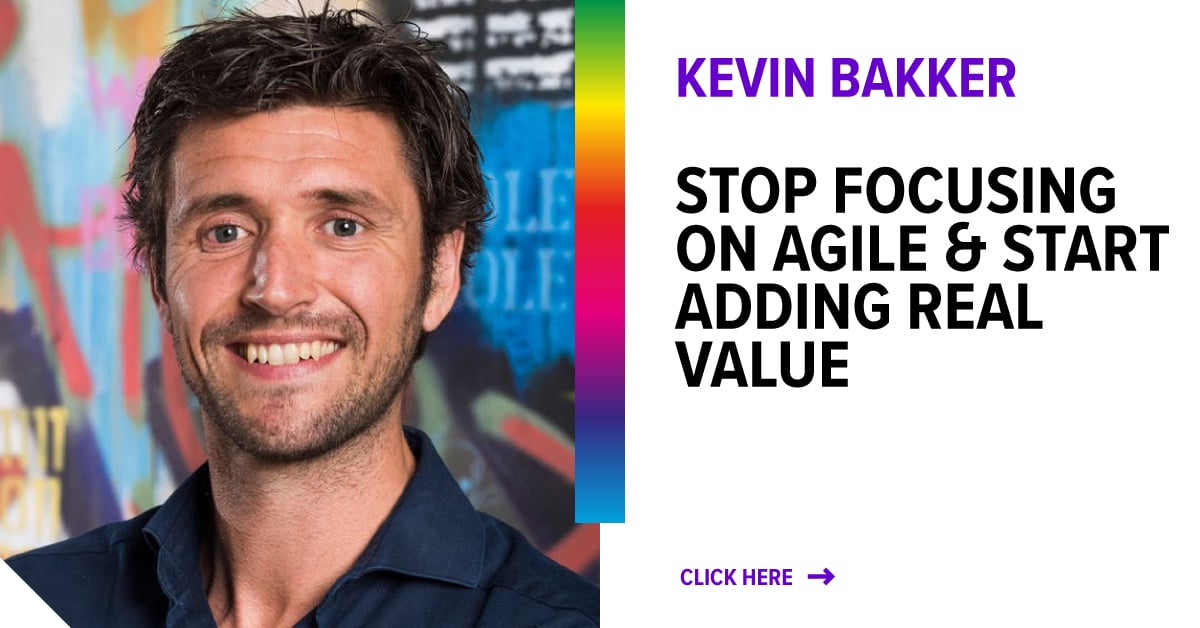In many organizations, Agile and Scrum have become container concepts—their true definition and purpose forgotten. So, it makes sense to regularly reflect with your whole team on the what and ways of working Agile.
Back to BasicsWhen you choose to work in an Agile way, make sure you don’t lose sight of the basics. Working Agile is not about blindly following a manual. Instead, it’s about internalizing the Agile mentality, values, and principles and making choices in your daily operations based on those beliefs. As an organization, keep asking, “what problem do we want to solve?” Does your approach add the most value, or are there other options? Testing a new approach now and then can result in better products and solutions. As Stephen Covey said, “If we keep doing what we’re doing, we’re going to keep getting what we’re getting.”
Author of this article is Kevin Bakker, Agile Transformation Consultant. This article is published in the 3rd edition of Boost Your Agile Organization towards better results . AGILE NXT is the magazine with the essential elements to become a truly Agile organization. It challenges you to improve yourself, your team, and company a little more each day.

Strong Foundations
Before you can take the NXT step, make sure your foundation is solid. There are multiple approaches to choose from that fall under the Agile umbrella, and each approach has different characteristics and benefits.
Because the focus with Agile is on delivering value to your organization and customers, it's not essential to fixate on strict implementation of just one approach. In some cases, organizations employ a combination of elements from different methods; for example, a mix of Scrum, SAFe, Less, and Kanban. The exact methodology is less important than meeting customer needs and delivering maximum value.
Future-Proof
Recently, there have been many developments in the field of Agile, which can make the options feel overwhelming. With all the data, methodologies, and terms thrown about, we can lose sight of what it’s all about— delivering value. When you integrate the Agile values and principles into your company's DNA, your teams will be ready for whatever challenge your clients need you to solve.
Agnostic With Agility—Tips for Practitioners
One size does not fit all, one framework is not the answer, and the ‘what’ and 'how' should be suited to customer context and a broader strategic vision. So, as Agile practitioners, we must remain agnostic with agility at any level. Here are six guiding principles for remaining agnostic with Agile1:
- Make the customer independent. Explain the Agile mindset, principles, and values, not just framework specifics. Empower customers towards independence, instead of creating dependencies.
- Tailor agility to context. Pull in whatever the customer needs. Don’t push what may not be required.
- Understand the constraints and work to remove them. Understand your customer’s unique context and strive to remove any constraints that hinder agility.
- Remember that agility is not the end goal. Attaining agility does not guarantee a better outcome for a customer. In some cases, more traditional approaches could work better, depending on the climate and context.
- Dogmatism is non-agile. Dogmatism does not benefit the customer, the community, or lend itself to continuously improving your practice.
- There is more to Agile than Agile. The road to agility sometimes needs to be built before we can begin or continue the journey. Coaching, Lean thinking, and organizational change management can help pave the way.
Want to know more about this topic? Download  Boost Your Agile Organization towards better results and start your personal change tomorrow.
Boost Your Agile Organization towards better results and start your personal change tomorrow.
Save 33% on your next virtual classroom.
Join our virtual Agile, Scrum and Leadership classrooms and get Certified. Remote Learning is possible via our Virtual Classroom. Learn from the world’s leading experts. Our courses and locations have been aligned to support distance learning.






